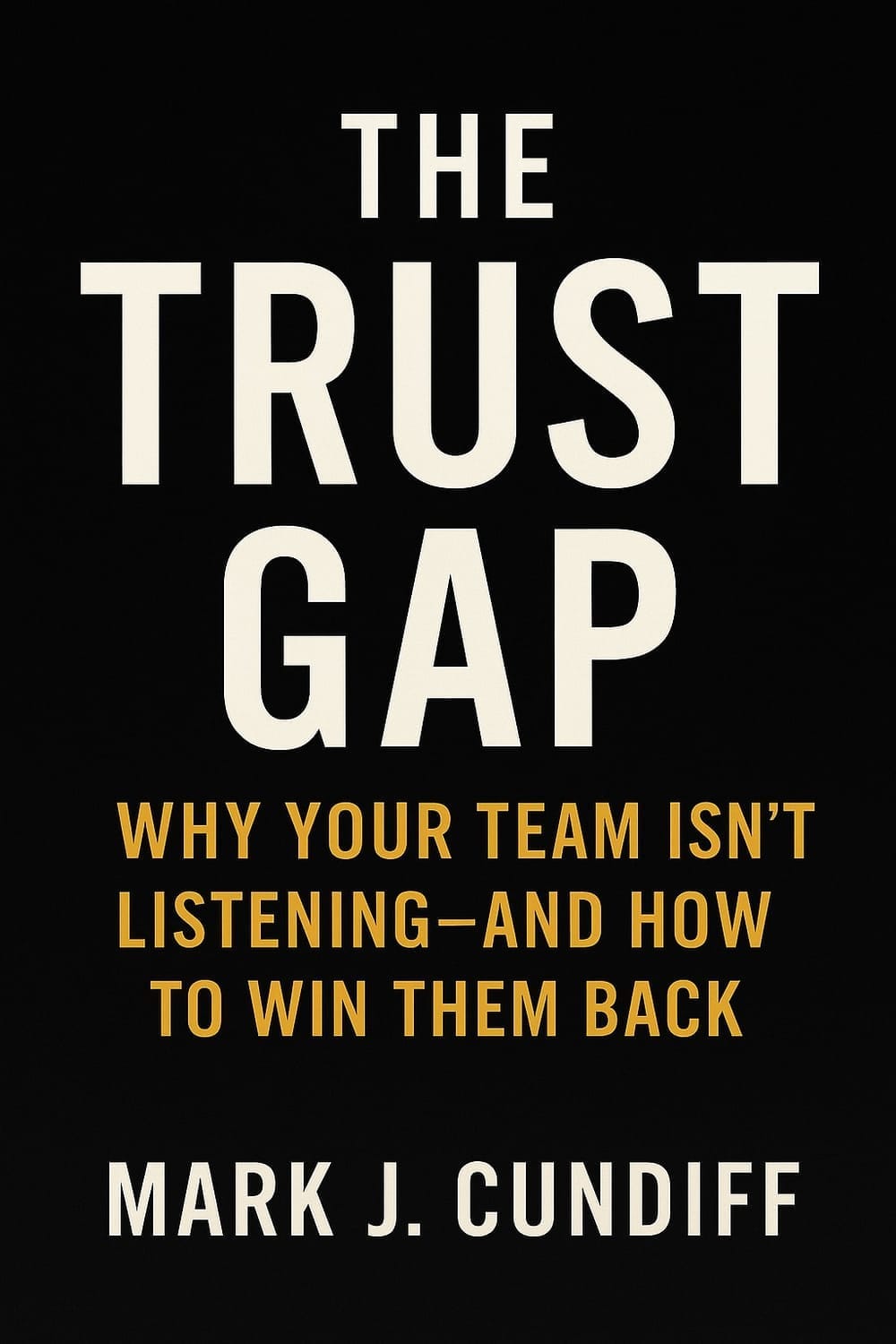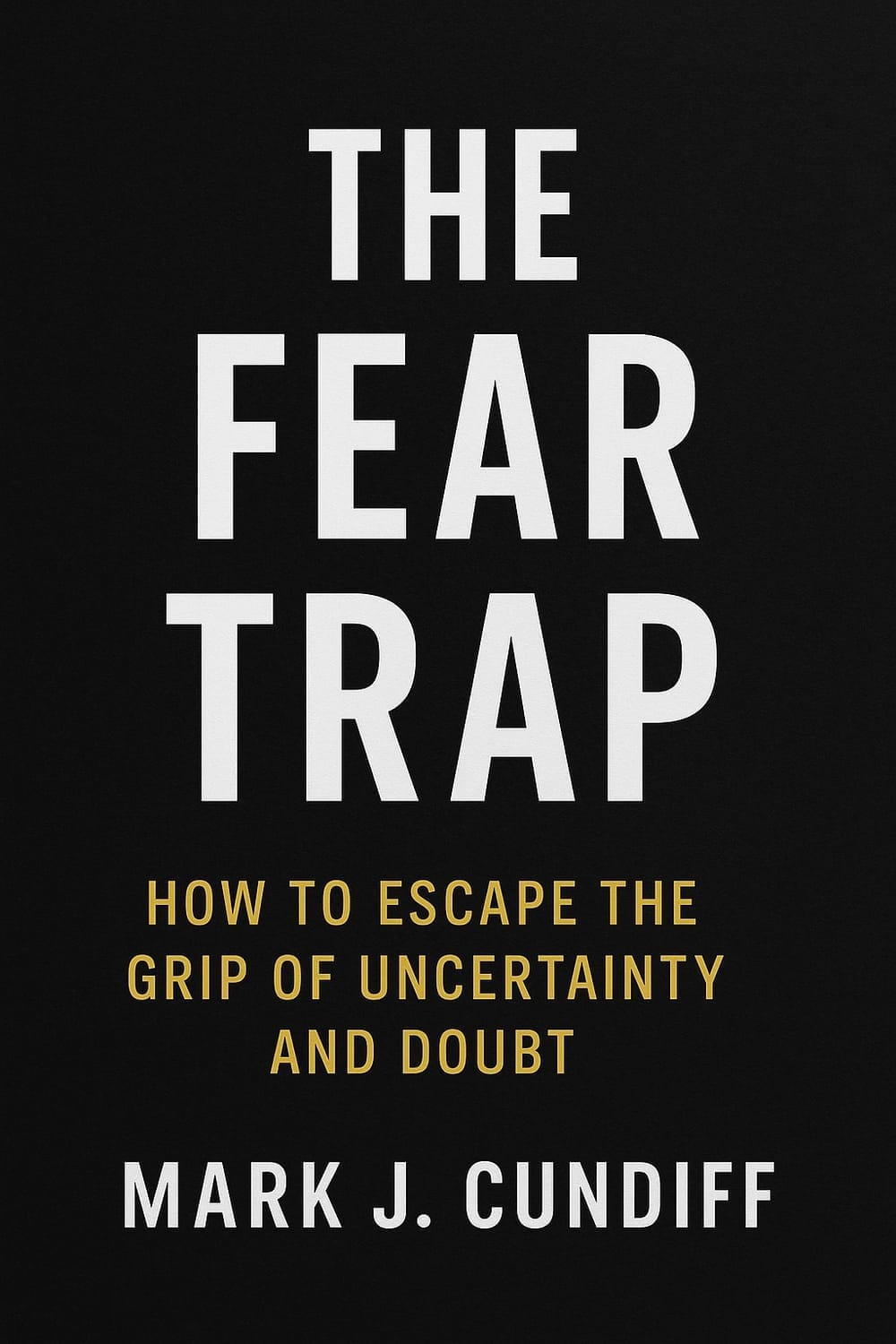The Trust Crisis That's Quietly Killing Your Leadership
Picture this: You're staring at your laptop screen, reading the same email for the third time. Your heart sinks a little more with each pass.
"Hi Sarah, I wanted to let you know that I've accepted a position with another company. My last day will be Friday. Thank you for the opportunities you've provided."
That's it. No phone call. No face-to-face conversation. Just a cold email from Jake—your top performer, your problem solver, the person you'd been preparing for promotion.
But here's what really stings: Jake isn't the first.
Over the past six months, three talented team members have quietly slipped away. Each time, you tell yourself it's about money, career growth, or "better opportunities." Each time, you push harder to fill the gap, work longer hours, and try to be the leader your team needs.
You're smart, driven, and genuinely care about your people. So why does it feel like you're leading through quicksand?
If this story sounds familiar, you're not alone. You're facing what I call the trust gap—and it's more common than you think.
The Silent Crisis Hiding in Plain Sight
Across industries and organizations, leaders are experiencing a phenomenon that looks like this:
Teams that appear engaged on the surface but feel disconnected underneath
People who show up but don't speak up
High performers who quietly start looking elsewhere
Meetings where only you're the only one talking
Ideas that never surface from your team
Decisions that need constant follow-up
After four decades of leadership—through successes and failures—I've learned something crucial: the trust gap isn't just hurting your team. It's limiting your impact.
Dr. Henry Cloud puts it perfectly:
"Trust is the confidence that someone will guard what is important to you."
That includes ideas, concerns, potential, and even their willingness to follow your lead.
When trust erodes, everything becomes harder. Communication feels forced. Collaboration becomes compliance. Leadership turns into management.
How Trust Dies in Small Moments
Here's the thing about trust—it rarely shatters in dramatic moments. It dies in the spaces between, in small interactions that seem insignificant but add up to everything.
I've identified five hidden forces that undermine trust in today's workplace:
1. The Presence Problem
In our hybrid world, we've lost the micro-moments that build trust. The hallway conversations. The ability to read body language. The casual check-ins that say, "I see you as a person, not just a producer."
As Cloud reminds us, "We're biologically wired to trust." But that wiring becomes confused when relationship-building happens primarily through screens and messages.
What it looks like:
Team members who seem engaged on camera but disconnected emotionally
Conversations that stick to agenda items and skip the human connection
Misunderstandings that spiral because tone doesn't translate through text
2. The Clarity Crisis
When leaders communicate in corporate speak, teams hear confusion. When teams are confused, they create their own narratives—and those narratives rarely assume positive intent.
Cloud says it plainly: "Confusion is the enemy of trust."
What it looks like:
Decisions that feel arbitrary because the reasoning wasn't shared
Priorities that shift without explanation
Messages that sound polished but feel empty
3. The Emotional Intelligence Gap
Technical skills get you promoted. People skills keep you effective. But many leaders rise through the ranks without developing the emotional intelligence to read their team's needs.
Cloud writes: "Trust begins not with convincing someone to trust you; it starts with someone feeling that you know them."
What it looks like:
Responses that feel dismissive, even when they're not meant to be
Inability to recognize when someone is struggling
Solutions are offered before problems are understood
4. The Consistency Crisis
Leadership burnout doesn't just hurt leaders—it creates unpredictable behavior that erodes trust. When you're running on empty, your team never knows which version of you they're getting.
Stephen M.R. Covey reminds us:
"Trust is built by consistency, not charisma."
What it looks like:
Patience varies based on your stress level
Energy that fluctuates unpredictably
Decisions that seem to depend on your mood
5. The Transparency Trap
In an effort to "protect" their teams, many leaders withhold information. But what feels like protection to you feels like exclusion to them.
Cloud warns: "Where there is lying, cheating, or stealing, there can be no trust. Zero." But omission can feel just as damaging as deception.
What it looks like:
Decisions made "above their pay grade" without explanation
Changes that seem to come out of nowhere
Information that filters down through rumors instead of leadership
The Trust Audit: Where Do You Stand?
Before we talk about rebuilding, let's assess the current state. Be honest with yourself:
Connection Check:
When did you last have a non-work conversation with each team member?
Do your people feel comfortable sharing bad news with you?
Can you sense when someone is struggling, even if they haven't said anything?
Clarity Check:
Do your team members understand not just what to do, but why it matters?
When you make decisions, do you explain your reasoning?
Are you communicating for understanding or just for information transfer?
Consistency Check:
Are you the same leader on Monday morning as you are Friday afternoon?
Do your reactions depend more on the situation or your stress level?
Can your team predict how you'll respond to challenges?
Transparency Check:
What important information are you holding back?
Do your explanations feel complete or carefully edited?
When did you last admit you didn't know something?
What areas made you uncomfortable?
Those are your starting points.
The Encouraging Truth
Here's what I want you to know: trust can be rebuilt. And when it is, everything changes.
Covey reminds us: "Nothing is as fast as the speed of trust." When trust exists, decisions are quicker, innovation thrives, and people go beyond their jobs. They bring their best selves to work.
This isn't about becoming a "softer" leader. It's about becoming a more effective one. Leaders who build deep trust achieve better results. They also create environments where people want to follow.
Your Next Step
The journey to rebuilding trust starts with a simple shift. Instead of asking, "How do I get them to trust me?" start asking, "How do I become someone worthy of their trust?"
Covey captures this perfectly: "We judge ourselves by our intentions and others by their behavior." Your team can't see your heart—they can only see your actions.
You don't need to overhaul your entire leadership style. You need to understand what trust really looks like—and commit to showing up differently.
Ready to close the gap?
This is the first in a series exploring how to rebuild trust and transform your leadership. In the next article, we'll dive into the five pillars of trust rebuilding and the practical steps you can take starting today.
Join over 3,900 Fellow Leaders reading The Learning To Lead Newsletter each week!
Recent Articles

Join over 3,900 Fellow Leaders reading The Learning To Lead Newsletter each week!
©2025 Learning To Lead | Helping Good Leaders Become Great Leaders


